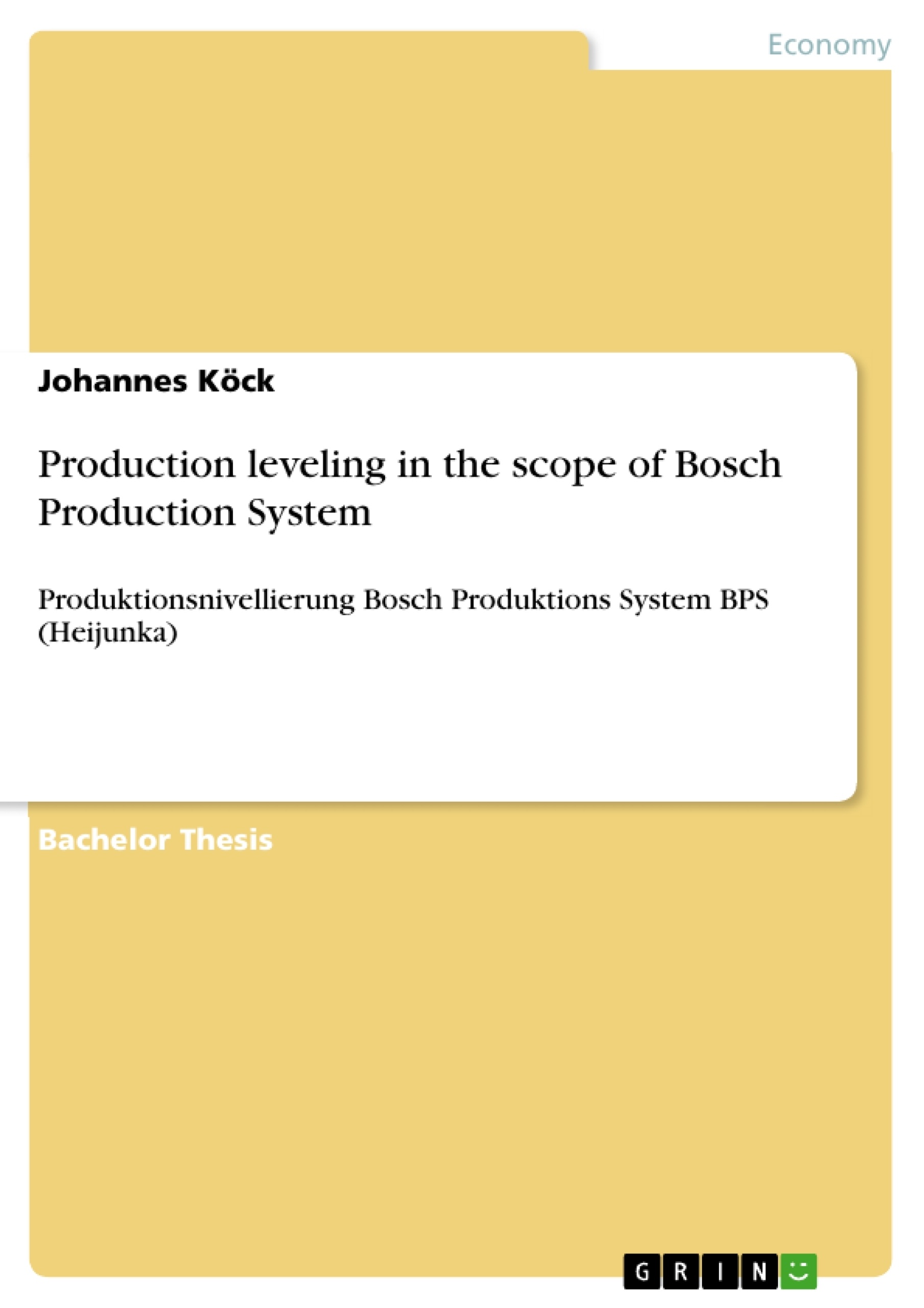Implementing Heijunka usually includes the implementation of production leveling and the implementation of a kanban pull system. This process, in the scope of the Bosch Production System, will be part of the following thesis. After a short introduction of the Robert Bosch GmbH and particularly of Bosch in China in chapter two, a theoretical part will follow in chapter three. In this paragraph the author of this thesis wants to introduce some basic elements and core principles about the Toyota- and the Bosch Production System. Moreover, some production control methods will be explained.
Chapter four, the practical and main part of this thesis, is devoted to the whole Heijunka implementation process in the respective plant of Bosch, Wujin plant. At the beginning, the current state of the value stream and the target state of the value stream are compared with each other. The next step will cover the preparations and finally the selection of a suitable value stream. The supermarket calculation and future steps are also included in chapter four. However, chapter four also contains some theoretical explanations to provide a bigger picture and to link theory to the practical implementation.
Finally, the author will move to the last chapter of this thesis, which shall deal with a short review of this project.
Inhaltsverzeichnis (Table of Contents)
- Introduction
- Theoretical Framework
- Production Systems in General
- Bosch Production System (BPS)
- BPS Principles and Elements
- BPS Methods and Tools
- Production Leveling
- Current Status of the SB12 Value Stream
- Production Leveling in the SB12 Value Stream
- Optimization and Analysis of the SB12 Value Stream
- Implementation of Production Leveling
- Conclusion
Zielsetzung und Themenschwerpunkte (Objectives and Key Themes)
This bachelor thesis investigates the application of production leveling within the Bosch Production System (BPS) at a Bosch plant in China. It analyzes the current production situation in a specific value stream, the SB12, and explores the potential benefits of implementing production leveling to improve efficiency and reduce waste. The thesis aims to provide a practical understanding of the concept and its implementation in the context of a real-world manufacturing environment.
- Production leveling within the Bosch Production System (BPS)
- Analysis of the current state of a specific value stream (SB12)
- Benefits and challenges of implementing production leveling
- Practical application and optimization of production leveling in the SB12 value stream
- Assessment of the impact of production leveling on efficiency and waste reduction
Zusammenfassung der Kapitel (Chapter Summaries)
- Introduction: This chapter sets the stage for the research by outlining the context and purpose of the thesis. It provides an overview of the Bosch Production System and the importance of production leveling within this framework.
- Theoretical Framework: This chapter delves into the theoretical foundations of the research. It explores various production systems, the core principles of the Bosch Production System, and the concept of production leveling. This chapter provides a comprehensive understanding of the theoretical underpinnings of the research.
- Current Status of the SB12 Value Stream: This chapter presents a detailed analysis of the current production situation in the SB12 value stream. It examines the existing production processes, identifies potential bottlenecks, and assesses the current level of efficiency and waste.
- Production Leveling in the SB12 Value Stream: This chapter explores the potential application of production leveling to the SB12 value stream. It discusses the different types of production leveling, assesses their suitability to the SB12 context, and outlines the potential benefits of implementation.
- Optimization and Analysis of the SB12 Value Stream: This chapter focuses on optimizing the SB12 value stream through the implementation of production leveling. It analyzes the impact of production leveling on key performance indicators and evaluates the effectiveness of the proposed changes.
- Implementation of Production Leveling: This chapter presents the practical implementation of production leveling in the SB12 value stream. It describes the specific steps involved in the implementation process, highlighting the challenges and solutions encountered during this phase.
Schlüsselwörter (Keywords)
Production leveling, Bosch Production System (BPS), value stream analysis, efficiency, waste reduction, lean manufacturing, kanban, pull system, manufacturing operations, supply chain management.
- Quote paper
- Johannes Köck (Author), 2013, Production leveling in the scope of Bosch Production System, Munich, GRIN Verlag, https://www.grin.com/document/377822



